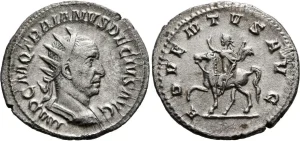Collecting ancient coins is a fascinating hobby that can bring you closer to history, art and culture. Ancient coins are not only valuable pieces of metal, but also witnesses of the past, reflecting the beliefs, values and achievements of different civilizations.
One of the main attractions of collecting ancient coins is that they are relatively affordable and accessible. Unlike modern coins, which are minted in large quantities and have a fixed value, ancient coins are scarce and unique. Each coin has its own story, its own wear and tear, its own patina and charm. You can find ancient coins in online auctions, coin shows, antique shops or even metal detecting. Some of them can cost as little as a few dollars, while others can be worth thousands or millions.
If you are interested in ancient history and numismatics, you might want to start collecting Roman coins. Roman coins are not only fascinating pieces of art and history, but also relatively affordable and easy to find. In this blog post, I will share with you some tips on which are cheap Roman coins to start to collect.
One of the most common and inexpensive types of Roman coins are the bronze coins issued by the emperors of the late third and fourth centuries AD. These coins are often called “follis” or “nummus” and they feature various portraits, legends and reverse types that reflect the political, religious and military events of the time. You can find many examples of these coins for under $50 on eBay or other online platforms. Some of the most popular rulers of this period are Constantine I (the Great), his sons Constantine II, Constantius II and Constans, and his successors such as Constantine’s nephew Julian II (the Apostate), Valentinian I, Valens, Gratian, Theodosius I and Arcadius.

Another option for cheap Roman coins are the silver coins known as “antoninianus” or “double denarius”. These coins were introduced by Caracalla in 215 AD and were minted until the reform of Diocletian in 294 AD. They have a distinctive radiate crown on the obverse to indicate their double value, and they usually depict various deities, virtues or military themes on the reverse. You can find many antoniniani for under $100, especially from the mid-third century AD, when the silver content was reduced and the coinage became more debased and abundant. Some of the most prolific issuers of antoniniani were Gallienus, Aurelian, Probus, Tacitus and Carinus.
A third option for cheap Roman coins are the provincial coins minted in various cities and regions of the Roman Empire. These coins often have more diverse and interesting designs than the imperial issues, and they sometimes feature local gods, cults or symbols that reflect the culture and identity of the people who used them. Provincial coins can be made of bronze, silver or even gold, depending on the period and the place of origin. You can find many bronze provincial coins for under $100, especially from Roman Egypt, Asia Minor, Syria and Gaul. Some examples of provincial coin types are the tetradrachms of Alexandria with portraits of Roman emperors and Egyptian deities, the cistophori of Ephesus with a snake in a basket, the city coins of Antioch with a river god or a chariot, and the potins of Nemausus with two crocodiles.
These are just some of the cheap Roman coins that you can start to collect. Of course, there are many more types and varieties that you can explore and enjoy. The best way to learn more about Roman coins is to buy a good reference book, such as David Sear’s “Roman Coins and Their Values”, or to visit online resources such as Forum Ancient Coins or Wildwinds. You can also join online communities of collectors, such as Coin Talk or Reddit’s r/AncientCoins, where you can ask questions, share your finds and get feedback from other enthusiasts. Collecting Roman coins is a rewarding hobby that can enrich your knowledge and appreciation of the ancient world.



